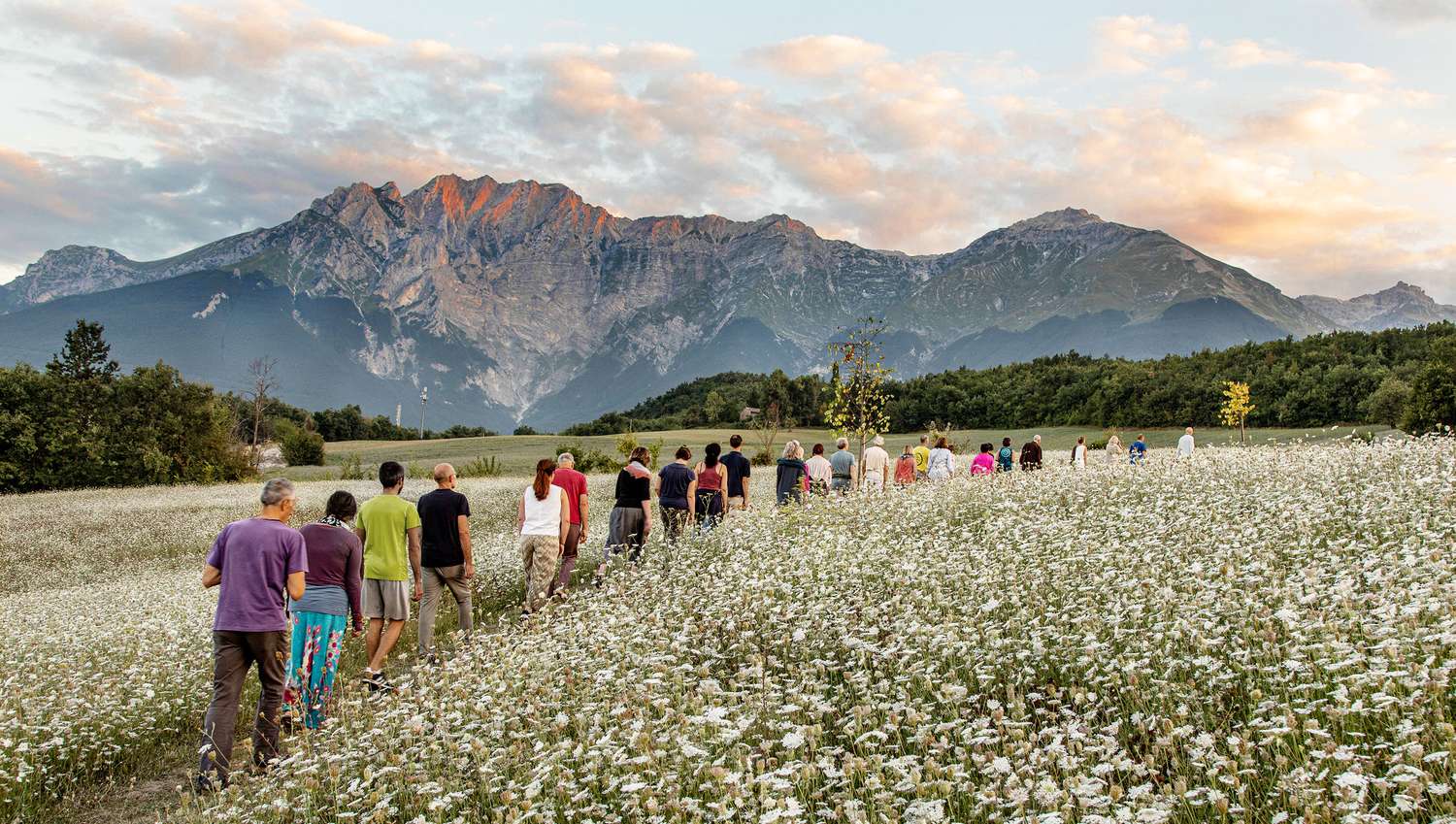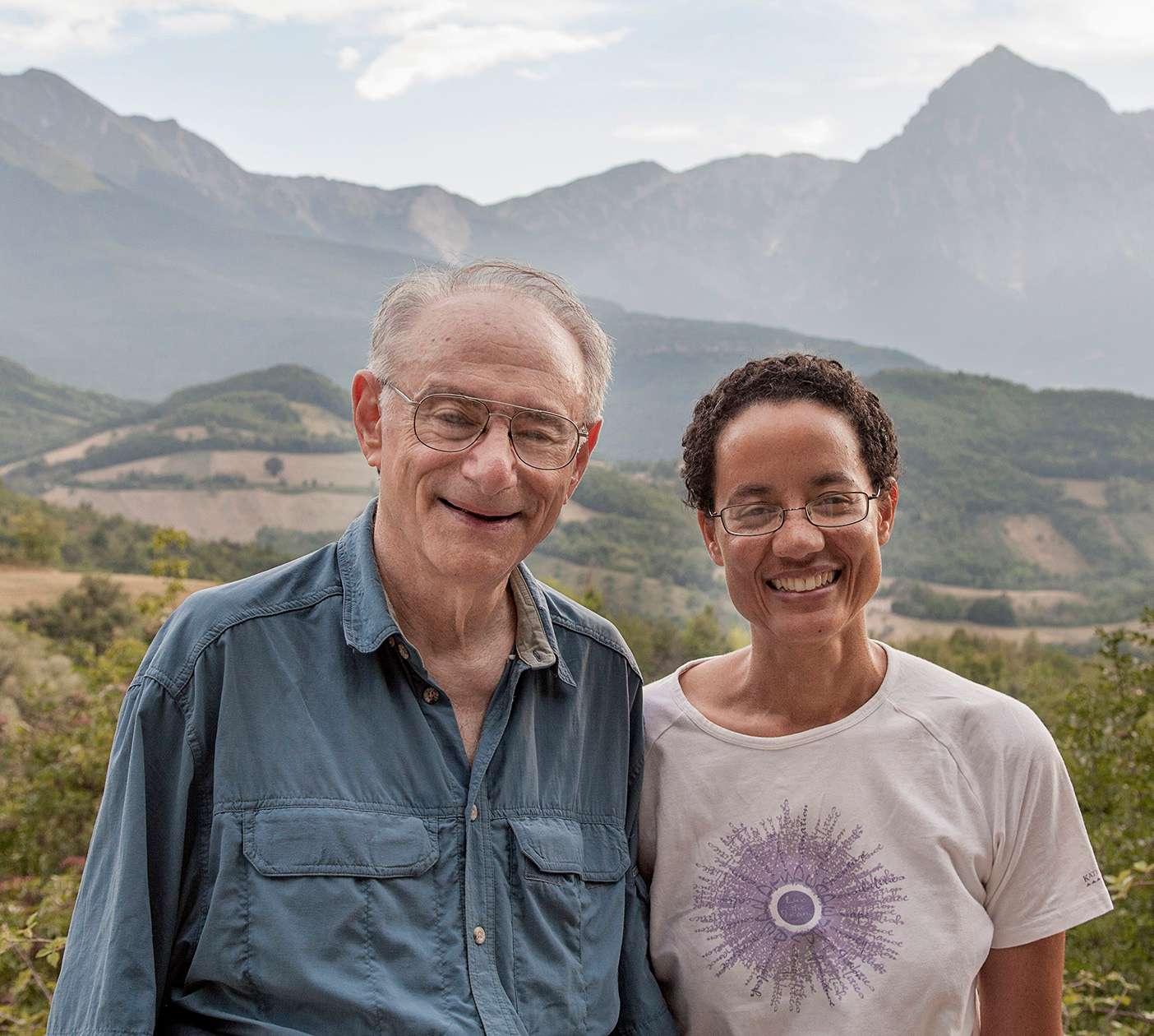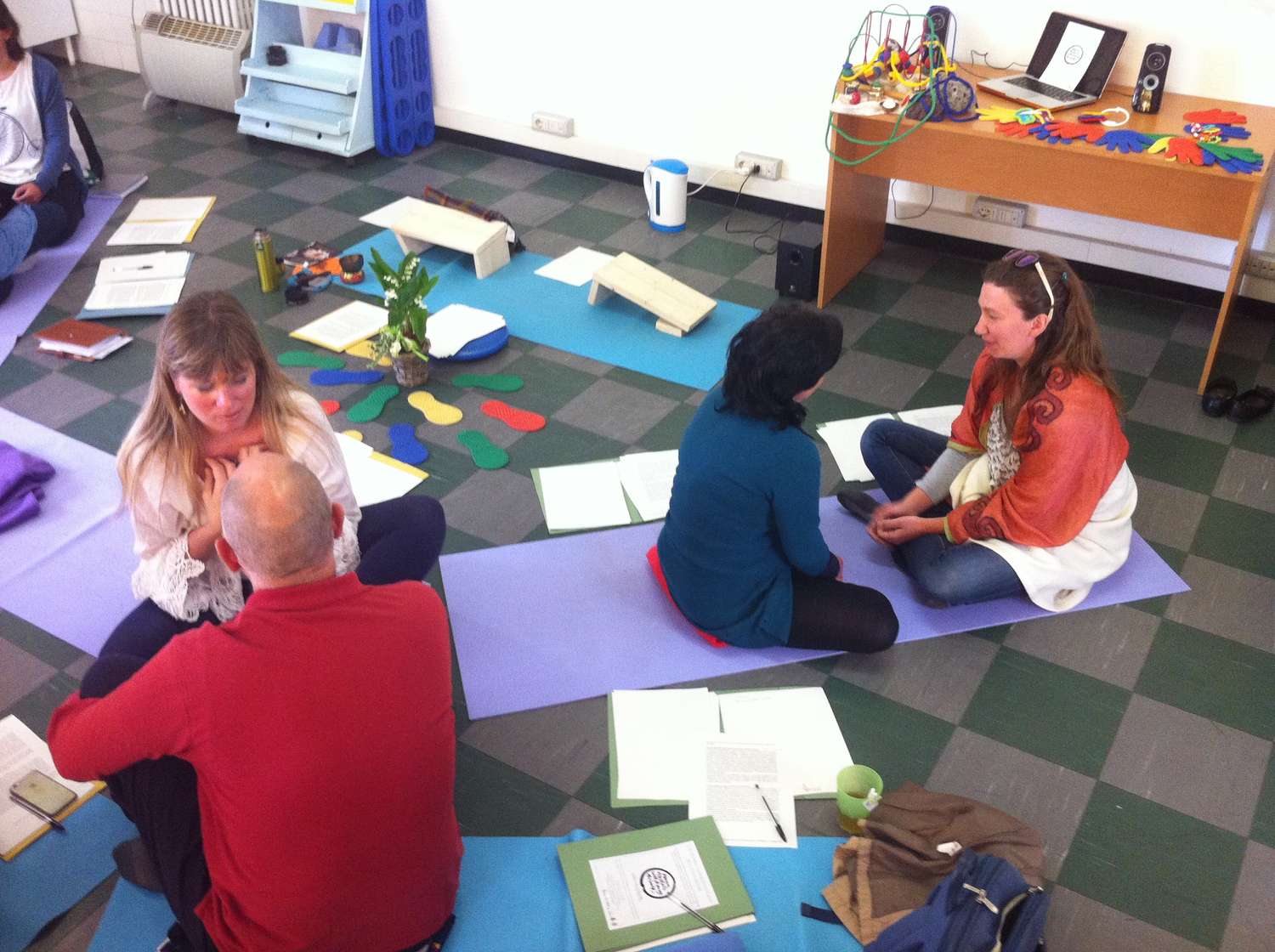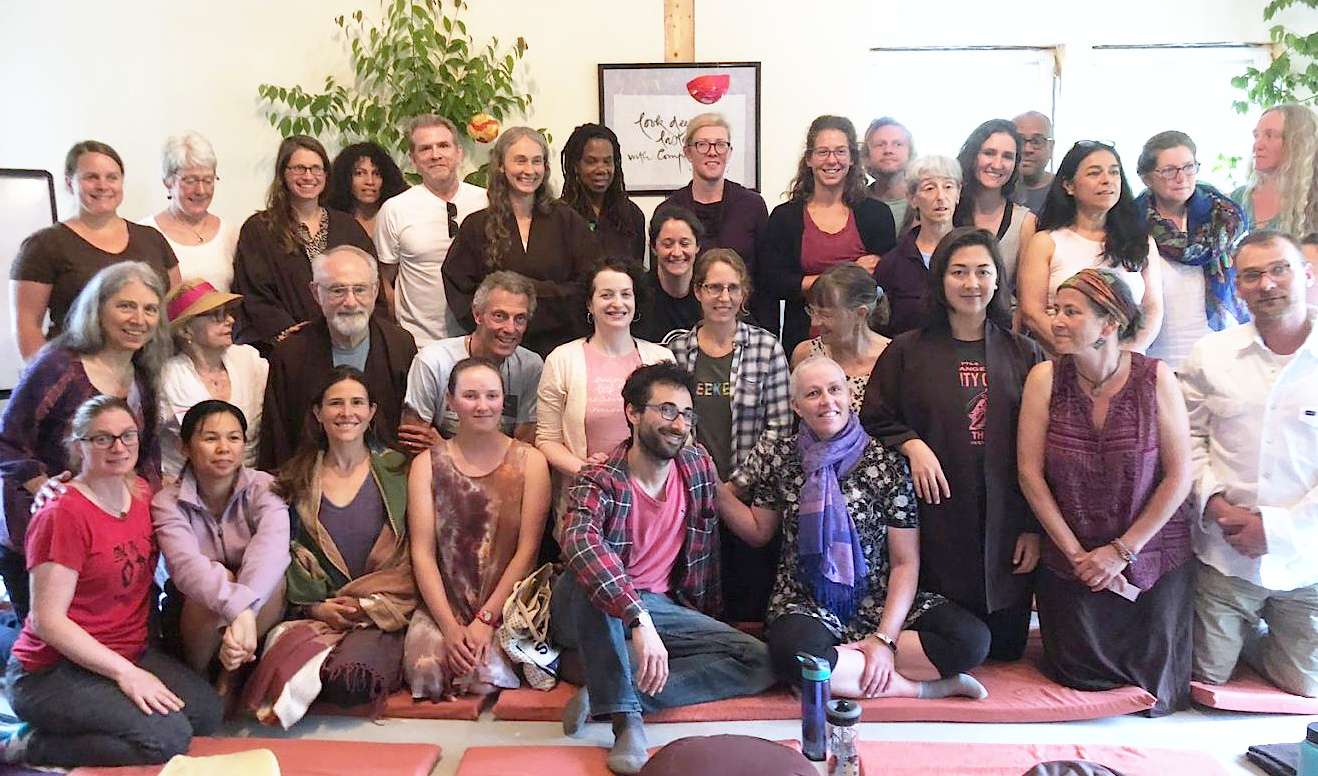Free at School
An Interview with Richard Brady
Richard (True Dharma Bridge) is a retired high school maths teacher, and a lay Dharma teacher in the Plum Village tradition. He is also a retreat leader, writer, educational consultant, and coordinator of the Wake Up Schools Level II Program in North America and he recently wrote a book titled Walking the Teacher’s Path with Mindfulness–Stories for Reflection and Action. This is an excerpt from a longer interview of Richard conducted by Kaira Jewel Lingo in August 2021. See youtu.be/o68kYh2N_U4.

Finding the path of mindfulness
Can you tell us some stories about how you found the path of mindfulness and how it has changed you?
In 1987 I found Thay’s book The Miracle of Mindfulness and started reading it. When I read the first story, about how to have unlimited time for yourself, I realized I wanted to bring this book into my maths classes and read it to my students. I was certain they would get much benefit from it. The students have so much work and there is so much pressure on them that having unlimited time for themselves would be the greatest gift I could possibly give them.

Everyday I began maths class by reading from the book. When I finished, my students said they would like another book, so I read The Sun, My Heart, which was kind of the sequel. For me it was like reading science fiction. I didn’t know anyone who lived their life the way Thay described, and I didn’t know how one could go about beginning to live that way. At the end of the year, the seniors went off to do their special projects and came back to report on them. I was touched by one of the seniors who reported on his two weeks at a Zen center in Washington, DC, where he went every day to meditate and to help out. He returned to school so invigorated; he was just beaming. The audience had an opportunity for a Q&A about his report. A student asked, “Chris, I can see that your life has been changed by your experience and that you spent a lot of time sitting on a cushion. Can you tell us any other way in which your life is different?” Chris thought for a minute and then replied, “There are many ways my life has been affected by my mindfulness practice. Most of them are very subtle and difficult to put into words, but I can tell you that I am less angry.” When I heard this, I thought, “Here is my teacher!” And I said to Chris, “I need to do what you’ve been doing. I need to begin a meditation practice.”
That was the beginning of what led me to attend a retreat with Thay. Everything after that unfolded in a way that felt deeply right. It seemed fated.
Bringing mindfulness to students
Can you share more about how, as you were beginning to walk this path, you began to bring meditation into your community and classroom and also about the effects of sharing mindfulness with your students?
When I met Thay and began my personal meditation practice, I was not ready to bring the practice into the Quaker school where I was teaching. I did not see an opening for doing that. My own mindfulness practice was still very young. I focused my attention primarily on developing it. A few years later a new course was set up and required for all ninth grade students for one semester. Discovering that it had a unit on health, I went to the teacher who was teaching the course and asked if I could offer one lesson on stress-reduction. When she said yes, I developed a lesson plan for teaching the 9th graders. I would have them for only 45 minutes. I knew whatever I did needed to be memorable. What were the students really interested in? I remembered Frank McCourt’s book Teacher Man (a book about the life of a teacher in inner city public schools), where he suggested that his high school students were interested in sex and food. When I thought about the teenagers I’d be teaching, I added one more thing: they were deeply interested in themselves. They were fourteen-year-olds trying to figure out who they were. What about introducing them to their minds?
The mind is often a part of ourselves that we don’t know much about. We know how to use it, but we don’t know what is happening inside when we do. So I invited my students to do an experiment, watching whatever happened in their minds for five minutes. I compared the mind to a stage where different things would come on to make an appearance. They’d be there for a while and then leave. When we talked together about what they might see on their stages, they ended up realizing they might become aware of feelings, thoughts, sensations from the outer world and internal bodily sensations.
The students were prepared to just notice things as they appeared. I asked them if they thought there could be more than one thing on their stage at the same time. Students generally thought it might be possible but they weren’t sure. I then asked them whether their stage might be empty for part of the time. Very few thought that was possible. So we experimented by watching our minds and then shared experiences. When I asked how many had negative thoughts or feelings during the five minutes, almost everyone had. Most of these thoughts had to do with things that had yet to happen or had already happened, maybe a problem with a friend or parent and, occasionally, a problem with what was happening right in the moment as they didn’t like what they were doing. I went on to talk about how what’s going on in your mind affects the kind of life you’re living.
If many negative things are happening in your mind, it might be kind of a downer to be paying attention to them unless you can do something about it. So I said, “There is something you can do about it!” and together we all did this short guided Plum Village meditation:
Breathing in, I see myself as a flower,
Breathing out, I feel fresh.
Breathing in, I see myself as a mountain,
Breathing out, I feel solid.
The idea that their minds were having a powerful influence on their lives was planted and also that there was something they could do to make their minds more hospitable and positive.
When students returned years later, some talked about remembering something I had read to them in class from Thich Nhat Hanh’s writing. Others remembered something I had talked about in the stress-reduction class. I was becoming aware that stress-reduction was not just a matter of school-related pressure; it was also the whole world starting to get stressed. I could see that mindfulness could become an extremely important tool, a way of coping, and an aide to doing more than just coping with the kind of world we were all moving into.
In my last two years of teaching, I took the step of getting permission from the school principal to begin every one of my classes with five minutes of mindfulness. Sometimes we read a short poem or story having wisdom and intelligence from Thay or another teacher or poet. There was also weekly free writing where we all just recorded whatever was in our minds for five minutes. It was a revolutionary experience for many of the students. They wrote to me at the end of the year to tell me about important breakthroughs or things they had learned, sometimes from themselves, in the course of these writing meditations.

Mindfulness and mathematics
How did you connect mindfulness with maths in your teaching?
Connecting mindfulness with maths was initially quite a challenge because maths focuses on analyzing and getting answers. It’s oriented towards an endpoint. Mindfulness, on the other hand, is about being present in the moment to whatever is there. What was important to me at this point in my teaching was that students learn how to sit with a problem even though they didn’t have an answer for it or even have a method to solve it–just sit with it without feeling they were going to be penalized if they didn’t end up with an answer.
In fact, I would sometimes ask them, “What questions do you have as you look at this problem–what comes to your mind?” I wanted them to learn to reflect, to see that they could just sit with something and have questions occur to them. This was not an easy transition for students used to coming up with answers but unfamiliar with coming up with questions.
It seemed to me that I was much more successful in my maths classes at giving students a way to understand themselves better, even if they didn’t understand mathematics a lot better right away. We did five minutes of mindfulness practice before starting our work. My students would then work in groups of four. The focus they had while working with each other, the attention they paid, and the group discussions were more productive as a result of their having had a chance to settle in and get out on paper things that were bothering them as they left their last class or an interaction in the hall.
Before taking tests, I invited students to do five minutes of meditation. The first half of the meditation focused on how you were feeling and what you were thinking as you went into the test. As there may have been a number of students who were not feeling comfortable or confident, I wanted to give them the message that there was nothing wrong with those feelings. They were completely understandable in light of the amount of studying they’d done or how they did on their last test. My message was, “It’s okay; it’s not something that needs to take over your life for the next 45 minutes.”
Next we would turn our attention to something mathematical we had done in our life that we felt proud of or happy about. It might be when we learned to count to ten, solved a hard problem, or finally understood a difficult concept. We closed our eyes, and sat with that feeling, knowing that we have in us many positive experiences with maths which are there even if we also have feelings of concern right now. If during the test they reached a point where they started to blank out or something similar, I asked them to just close their eyes and go back to that moment that they had thought of earlier when they felt very happy with mathematics and their relationship to it.
The aspiration to help teachers
What is your aspiration in sharing mindfulness with educators, especially in this wonderful new book? What are you hoping educators will come away with from a retreat or from reading this book?
At my high school I was in the position of being the only teacher with a mindfulness practice who found skillful ways of sharing mindfulness with students. I now see that the most important ways I shared mindfulness with my students were the changes in my own approach to teaching. The fact was, I now took my time, and I asked students to take their time with what they were doing.
Eventually I began courses by giving students five minutes to eat a single raisin. We talked about how to eat the raisin and bring our full awareness to what was happening. I suggested that was how I wanted them to do their homework, not to rush through it in order to finish the assignment, but to spend 30-40 minutes on their homework even if they didn’t finish it. The way they did it was more important than how much they did.
In writing my book, I wanted to give teachers a sense of their own agency in choosing what they conveyed to students. I did this by telling stories about how I grew as a teacher. While these stories were particular to me, each one is followed by three or four questions for readers to contemplate and reflect on. My hope for the book is that teachers will begin to spend more time reflecting on their own lives. My goal isn’t to tell teachers what to do when they get to their classroom. It’s to encourage them to develop their own mindfulness practice. Once teachers experience mindfulness and begin to really feel at home with it and ready to share it, they’ll find ways to do so that are organic and work for their students.
I recently wrote an exercise called “Free at Work.” It was for anyone who works, and for teachers in particular, to help them meditate on their experience of working and their experience of freedom or lack of freedom and begin to see that most of the barriers to feeling free at work are internal barriers. If teachers start to practice in a way which enables them to have a different relationship with the so-called barriers inside of themselves, the kind of teaching they are doing will be greatly affected and likely become much more powerful. That’s what I want for teachers to get from the book.
Connecting teachers
The Mindfulness in Education Network has over a thousand members all over the world. They are focused on young people of different ages, on different subjects, on higher education, the arts, yoga, etc., using all kinds of different approaches. As an early leader in this field, I would often get questions from other teachers asking me for advice on how to deal with a problem involving mindfulness. I could answer only a few of the questions from my own experience. When I knew I didn’t have a very helpful response for a particular question, I would invite the person who’d submitted it to me to go to the Mindfulness in Education Network website, join the listserv, and post their question. It was surprising and wonderful to see the wisdom that was available to answer the questions.
